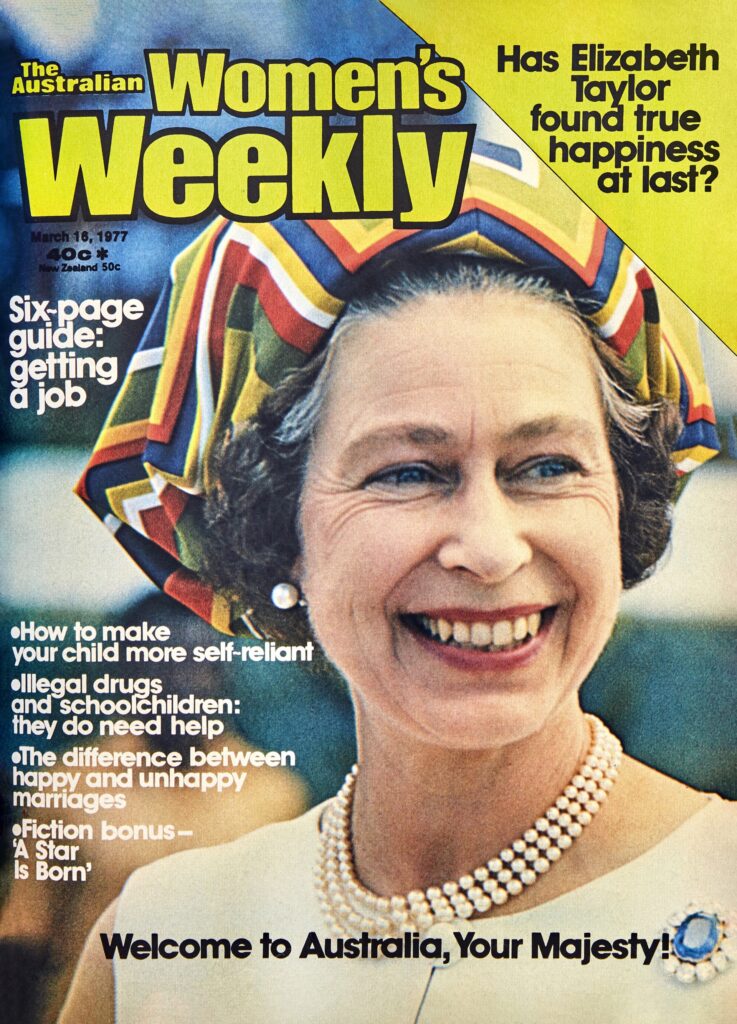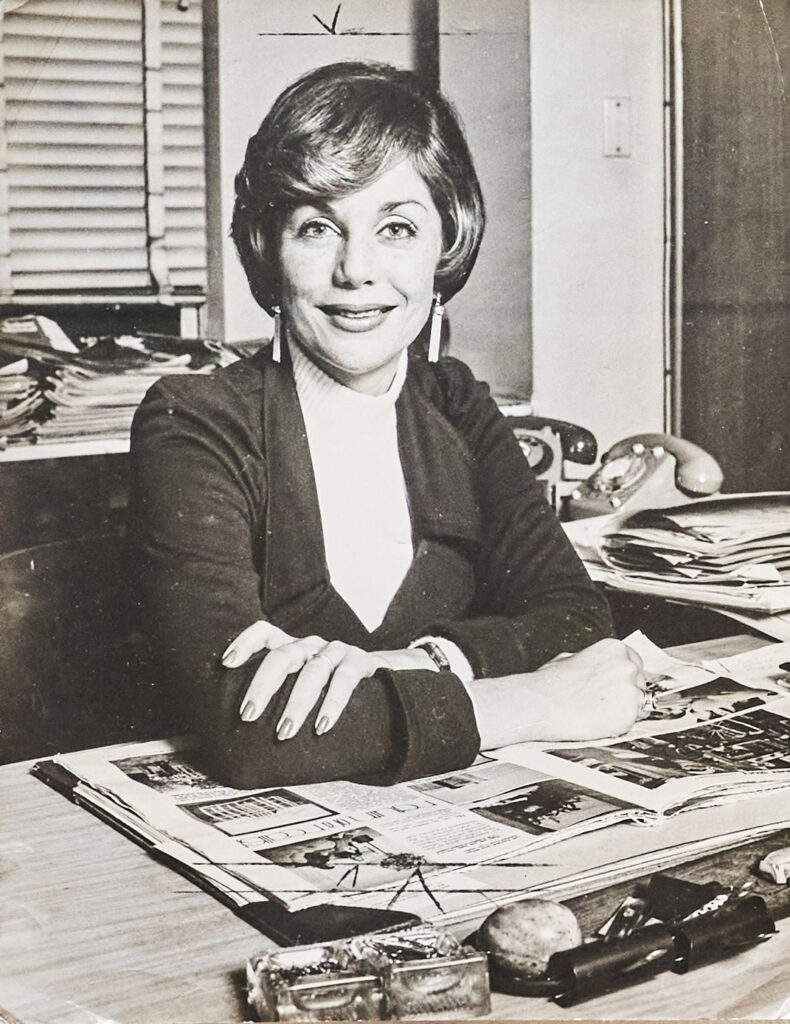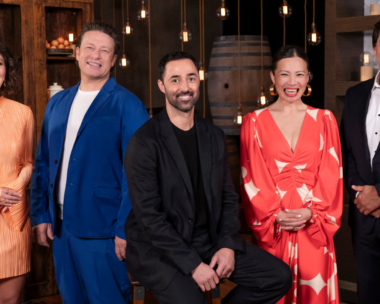In 1975, at only 33 years old, Ita Buttrose became editor-in-chief of The Australian Women’s Weekly. Here she reminisces about her “best job ever”, recalling important women’s issues The Weekly has championed, including The Pill and extended trading hours, and recalls the landmark Voice of Australian Women survey.
Undertaken in 1980, Ita Buttrose asked the women of Australia what was really going on in their lives. She received 10,000 letters addressed to her personally.
What did The Australian Women’s Weekly mean to you when you were growing up as a child?
Ita Buttrose: The magazine was really a part of my childhood. You never had a Wednesday without The Weekly. I remember saying, “Who’s got The Weekly?” because we all would dive for it. Mum would read it first, then Dad and then I would read it. It was just a fact of life and I think that was the same in most people’s households when I was growing up.
The Weekly was originally a news magazine for women and so every big event in the world was always in The Weekly with a colour picture – this was before the advent of colour TV.
Man went to the moon – you could see it in The Weekly. During World War II it used to be sent to the troops in the war zone so they could keep in touch with what was going on in Australia. It was a very important magazine in Australia.
What was the secret to its success?
First of all, it wasn’t sensational. It reflected what was happening in Australia at the time. It didn’t beat up articles or make things up. And I think women regarded it as a friend. The Weekly entertained, informed and showed us new ideas; new methods of cooking, which was especially important in those early decades. The Weekly has always had a relationship with the woman who picks it up. She looks forward to meeting that ‘friend’ and the magazine then lives on for months. It goes from person to person. It goes to hairdressers – well, it did before COVID – it goes to hospitals. It gets passed around. So, this ‘friend’ keeps going, keeps touching people.

You first joined The Weekly as a copy girl. What was it like walking into the famous Park Street offices in Sydney on your very first day?
I was only 15, so I was in awe because I’d grown up in a journalist family. Most of the women at The Weekly were fantastic journalists and they were friends of my parents, so I was very respectful. This was the place I really wanted to work and I had no idea of my future but I just wanted to be the very best copy girl possible.
I didn’t know it at the time but I created a very favourable first impression because I was the only copy girl who ever brought in a tea towel for the washing up. I used to make tea and coffee for 40 people every morning and afternoon, so there were quite a few cups. Evidently this was ground-breaking. I only learned the impact of my tea towel when I became editor 18 years later and the staff told me.
What was your office like?
Copy girls didn’t have an office; we had a couch outside a bell system that looked like something out of Upstairs, Downstairs. Someone would want you and a flap would come down and it would say ‘Editor’s Office’ and you’d go charging off. You had to answer them very, very quickly.

You became the Social Roundabout editor in the 1960s. What did that role entail?
I was 21 and married when that happened and Social Roundabout was taken very seriously with reporters all over the country. My area was Sydney and I covered exclusive social activities. I really mean high society. It wasn’t just any old party; it had to be somebody well known. You would trot along and we were able to take colour photographs then. I might have a big society wedding and I’d ring them and say, “Ita Buttrose here from The Australian Women’s Weekly, we’d like to cover your wedding in colour.” That always got us in the door. Everybody wanted to be in colour in The Weekly.
The most important people in the Social Roundabout were primarily women with well-to-do husbands. Many of them lived in the rich suburbs, but a lot of them came from the country because country life was very full – picnic races, bachelors balls and all sorts. We often went on assignment and we were very keen on the polo because Sir Frank Packer, the owner and founder of The Weekly, was polo mad. I had no idea what a ‘chukka’ was when I went to my first polo match, but I soon learned!

How important was the royal family?
Incredibly important and we had our own Royal Correspondent, Anne Matheson. I used to think she was a bit more like the Queen than the Queen herself. She used to wear a brooch, like the Queen did. She was very regal, but she was also very, very knowledgeable, and the Palace loved her. The Queen was one of our best cover girls along with Princess Diana many years later. The Palace would send out photographs and they were beautiful, you just had to use them, they were so good. They were taken by the Queen’s cousin, Lord Lichfield, and later Lord Snowdon, Princess Margaret’s husband, from whom she got divorced. They were just lovely and Australians couldn’t get enough. Whenever the Queen was on the cover we knew we’d sell well.
In 1975 you received a call from Kerry Packer, who was now head of his late father’s business, asking you to become editor of The Australian Women’s Weekly. What did you think?
I was over the moon. It was the top job for a woman journalist and I wanted it. Per capita of population it was the largest circulating magazine in the world. This was a mighty publication, and it was a great honour to edit it.

Was it daunting taking on an icon?
Yes, but exhilarating. Of course all I wanted to do was keep it in the position that people in Australia held it. But my brief from Kerry Packer was to bring it into the 20th century, and change at The Weekly was considered to be a bit like tampering with the Bible. It was such a revered publication. I was only 33 and the staff seemed quite old to me. Now, of course, I realise they weren’t old at all. But they were nervous because I was young and while they saw I had some runs on the board I had a lot to learn.
So, I had to win all the staff over, I had to win the readers over and I had to win the advertisers over to see The Weekly was going to change but it would still be The Weekly. It would still have the same values, the same principles that people knew, trusted and loved. Fortunately, many of the changes we implemented did work and that’s why the magazine is still with us today, still going well.
The Weekly has always been at the forefront of campaigns for women and the need for reform. Which had the most impact?
The Pill was a big one for The Weekly and another in my time was trading hours. We campaigned for better trading hours on Saturdays because everything shut at 12 noon on Saturdays. If you were a working mother, or working woman, you had to really go like hell on a Saturday morning to get all your shopping done.


Which campaign are you most proud of?
Definitely the most important thing I did was run a survey called ‘The Voice of the Australian Woman’. My aim was always to get women’s viewpoints across in Australia and to do this we asked 230 questions about marriage, sex, children, conservation, conscription, adoption, abortion – you name it, we asked about it.
We had 30,000 responses and 10,000 women wrote letters to me. ‘Dear Ita …’ and they shared the most intimate moments of their lives with us and with me in particular. It was amazing, they trusted us to that extent. It was considered the most successful and largest survey to be done in Australia, apart from a census, so it was a very significant piece of research.
What did you discover?
For the first time women talked about the incidence of incest – which we now call child abuse – which was a taboo subject then. Three per cent of women had been abused and 63 per cent of them were under 11. It shocked us and I asked the readers’ permission to publish the findings because it was a big thing, a big step forward to bring this out into the open, into the public arena. They consented, which was phenomenal.
Rape came up as well. There was a girl who wrote to me, she was only a teenager, and I tracked her down and rang her up. She told me that her father had been raping her and that she’d gone to tell the priest and he’d told her not to tell such terrible lies about her father; that “she was a naughty wicked girl”. We uncovered a lot of things, just to give women that voice allowed them to share things with amazing lack of inhibition. It was extraordinary. Women were coming into their own. They realised, in these changing times with women’s liberation, a stirring. Women were saying, “I don’t want to put up with this anymore”.

What were your best and worst magazine covers?
I tried a cockatoo who’d lost all his feathers. We knitted him a coat and put him on the cover. That didn’t work well! And I loved the illustrated covers and commissioned a caricature of Margaret Whitlam. She was in a tutu. God knows what we were thinking. I thought it was lovely because it was different. But no! The readers didn’t like it. My sure-fire winner? The Queen. Always the Queen.
Kerry Packer was a force in the industry. How well did you two work together?
We got on really well because I think we thought alike. He used to get slightly horrified at some of the things I was doing but we both had big ideas and when you meet somebody who says, “Oh yeah, I see where you’re going”, it’s really buzzy.
He had a fantastic sense of humour and a wonderful sense of curiosity and he never really interfered with anything I was doing. If I wanted to spend a lot of money on a project it was understood that I would go and seek his permission, but I never expected him to say no. He was very generous to staff who needed a helping hand. I found him a delight to work with.
What’s the most fun you had on The Weekly?
Honestly, every day I worked at The Australian Women’s Weekly was fun. But I think it was the time Kerry Packer gave us a two-for-one party. Now, that occurred when we outsold Woman’s Day by double. He sent us all off to the Hilton for a humdinger of a party. Champagne flowed and everybody couldn’t believe their good fortune. He was like that. It was a great celebration to be part of, believe me.

What does your time at The Weekly mean to you today?
It meant everything to me then and still does now. It was the happiest period of my life. It was certainly the high point of my professional career, a job I really wanted and cherished. It opened so many doors and it brought me in touch with so many Australians, particularly women. It’s a memory that I will cherish forever. I really loved running The Weekly.
Did you ever think the magazine would celebrate its 90th birthday?
I never thought it wouldn’t be here and I imagine it will be for its 100th.
The Weekly has commissioned a new ‘Voice of Australian Women‘ survey. See the results in the December 2023 issue, on sale November 2.



